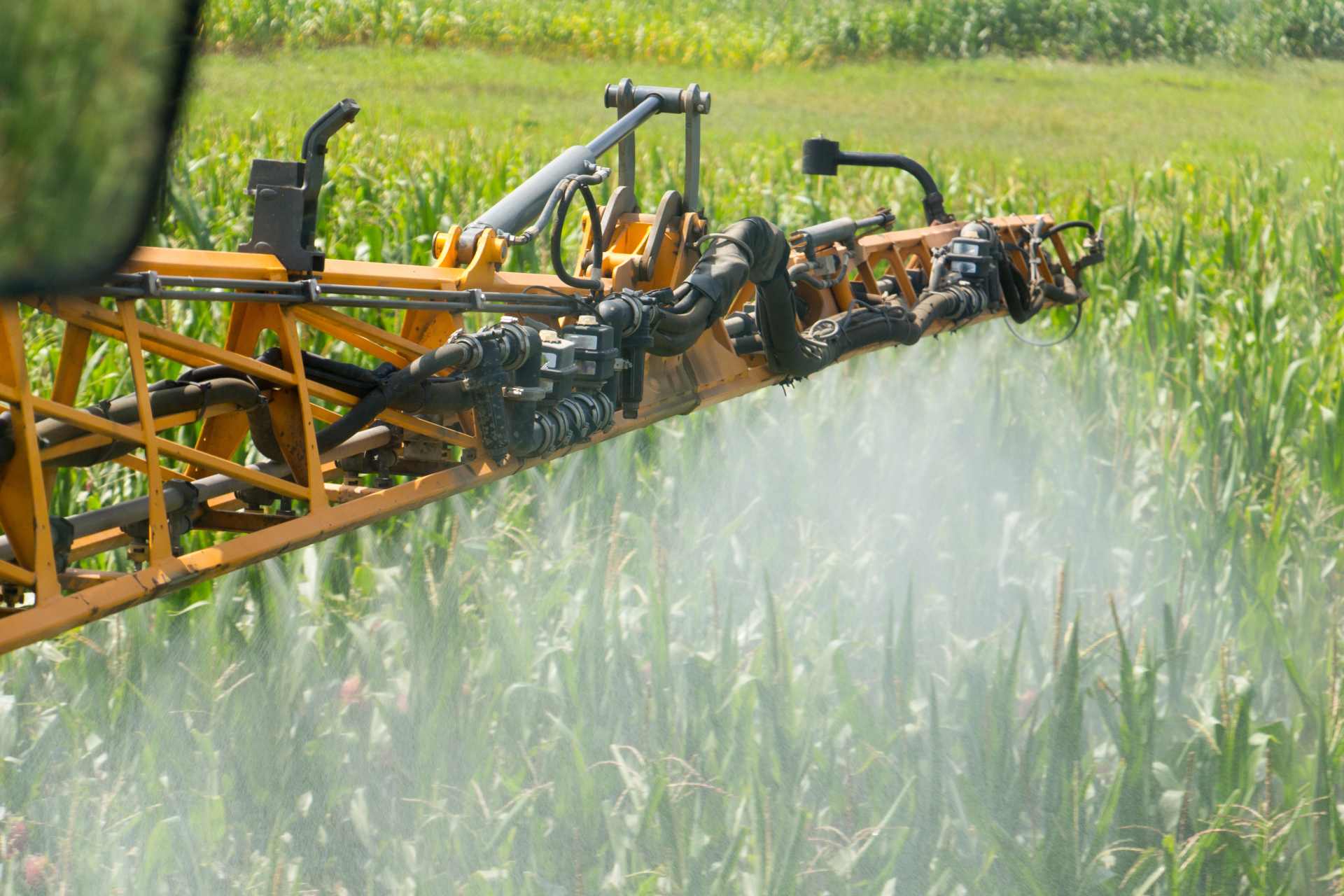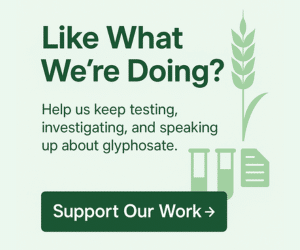Not All Herbicides Are Created Equal
Herbicides don’t all work the same way.
Glyphosate interferes with one part of plant biology; Icafolin targets something else entirely. And if you’ve been hearing about Icafolin as the “new alternative,” you might be wondering—what exactly sets it apart?
Let’s take a closer look. Not just at how these two chemicals differ in their mode of action, but what those differences actually mean for health, soil, resistance, and the future of weed control in New Zealand.
Because “new” doesn’t always mean better. Sometimes it just means… new.
How Glyphosate Works — and Why It’s Being Replaced
Most of us are familiar with glyphosate as the active ingredient in Roundup®. It works by blocking an enzyme plants need to produce essential amino acids—basically starving the plant from the inside out.
It’s non-selective, meaning it doesn’t just target specific weeds—it kills almost everything green. That broad-spectrum capability is part of what made it so appealing in industrial agriculture. One chemical. Broad application. Job done.
But nature doesn’t sit still. After decades of intensive use, more and more weed species have developed resistance to glyphosate. Some estimates suggest over 50 weed species worldwide no longer respond to it. That’s a major red flag for a system that relies so heavily on one active ingredient.
So now, the chemical industry is racing to fill the gap. Bayer and other agri-chemical giants are banking on “new mode of action” herbicides like Icafolin to keep the system running.
But swapping one mechanism for another doesn’t solve the underlying problem: chemical overreliance. It just hits pause—until resistance catches up again.
What Icafolin Does Differently
Icafolin belongs to a new class of herbicides that interrupt a completely different part of a plant’s biology: cell division.
It binds to a protein called tubulin, which plants need to build microtubules—tiny structures that help cells divide and grow. Without that ability, the plant stops developing. It doesn’t collapse dramatically like with some herbicides; it just stops growing. Quietly. Permanently.
The result? A standing, dead weed that turns into mulch—at least in theory.
And unlike glyphosate, Icafolin has been shown (so far) not to interfere with mammalian cells, which has helped Bayer position it as a safer, more targeted option.
What About Harvest-Time Spraying?
While Icafolin is being introduced to replace glyphosate for weed control, it doesn’t replace its role at the end of a crop’s life.
Glyphosate isn’t just a weedkiller—it’s also used to kill crops on purpose just before harvest. This process, known as pre-harvest desiccation, has been common in conventional farming. It allows crops like wheat, oats, peas, and canola to be dried down quickly and uniformly, making harvest more efficient—even if it means residues are left behind.
But here’s the update: as of 30 October 2025, New Zealand’s Ministry for Primary Industries (MPI) announced new rules that ban glyphosate use for pre-harvest desiccation on human-consumption cereals like wheat, barley, and oats. For these crops, glyphosate can now only be used before they emerge from the soil.
That sounds like progress—but it leaves a gap. No other chemical, including Icafolin, serves the same function at harvest. Icafolin doesn’t dry crops or act systemically the way glyphosate does. In fact, it’s marketed on the idea that weeds stay upright after death, creating a kind of mulch effect—not exactly ideal when your goal is to speed up harvesting.
So while headlines focus on Icafolin’s “new mode of action,” the food safety side of glyphosate use is still unresolved—especially for crops not covered by the MPI decision, like canola or legumes.
We dive deeper into that issue in our related article:
The Desiccation Dilemma: Why Glyphosate’s Real Role Is Hard to Replace
A Different Mechanism Doesn’t Change the Model
Icafolin isn’t being introduced to support organic growing, or backyard gardens, or regenerative food systems. It’s being introduced to preserve yields in a farming model that’s already heavily dependent on chemical inputs.
This is less about innovation—and more about reinforcement. A way to protect productivity in the face of a growing resistance crisis. A patch, not a pivot.
The dominant system is built on the belief that weeds are enemies to be eliminated quickly, efficiently, and across vast areas of land. It’s a model that rewards uniformity, speed, and chemical control. The goal isn’t to coexist with nature—it’s to outpace it.
In that context, a new chemical—even one with a novel mode of action—isn’t a revolution. It’s an extension of the same thinking that led us here. A different active ingredient doesn’t challenge the operating assumptions of industrial agriculture. It just keeps the machine running.
And that’s what makes this moment so critical. Because when resistance builds, and alternatives emerge, we have a rare opportunity to ask bigger questions.
Not just “What else can we spray?”
But “What else is possible?”
Australia Is in the Process of Approving Icafolin — What Does That Mean for NZ?
Bayer has already confirmed that it plans to submit Icafolin-methyl for regulatory approval in Australia in 2026, with a target commercial launch by 2028. Australia has been flagged as a “priority market,” in part due to Bayer’s partnership with the Grains Research and Development Corporation (GRDC).
This signals more than just a technical launch window—it reveals intent. The company is moving fast to preserve the chemical status quo, securing footholds in major agricultural economies before resistance to glyphosate becomes unmanageable.
So what does this mean for New Zealand?
It’s not clear yet whether the same urgency will apply here. But it does suggest that if or when Icafolin comes knocking, it will be framed as a necessary step forward—when in fact, it’s just another way of keeping the same machine going.
Meanwhile, Back in New Zealand…
Here in New Zealand, we have an opportunity to ask a different kind of question. Not just what chemical comes next—but what kind of food system we want to build from here.
Because the truth is, there are growers in New Zealand already doing things differently. They’re using biologicals, mechanical tools, crop rotation, and timing—not chemical shortcuts—to manage weeds. And they’re doing it without waiting for industry to hand them the next product.
What if they weren’t the outliers?
What if we backed them?
What if public funding supported the shift away from chemical dependence, rather than retraining farmers to adopt new labels and formulations?
It’s easy to get swept up in words like “reduced risk” and “new mode of action.” We’ve heard it before. Glyphosate was once marketed the same way. So were organophosphates. Each time, we were told the risks were low, the science was sound, and the tools were necessary.
But New Zealand doesn’t have to keep playing catch-up with regulation. We don’t have to accept more residues, more spray cycles, and more chemical creep in the name of productivity.
We can ask better questions. And we can support better answers.
This article is part of a mini-series exploring what’s replacing glyphosate—and why it might not be the revolution we’re being sold.
- Part 1: Icafolin: The New Glyphosate Alternative or More of the Same?
- Part 2: The Desiccation Dilemma: Why Glyphosate’s Real Role Is Hard to Replace
- Part 3: You are here — How Icafolin Herbicide Works—And Why It’s Not Just Another Glyphosate
- Part 4: What Happens After Glyphosate? A System Under Scrutiny
Related Series
This article is part of a broader exploration of how chemical regulation works in New Zealand — and how often it doesn’t.
If you’re wondering why glyphosate got so entrenched in the first place — and how alternatives like Icafolin are slipping in with little public scrutiny — you might want to start here:
Ignored PCE Warning: NZ Chemical Monitoring
A 3-part mini-series examining how the system failed to act on the Parliamentary Commissioner for the Environment’s warnings about toxic chemical oversight.
Resources & References
Before You Go Down the Rabbit Hole…
It’s easy to get swept up in the hype of a “new mode of action.” But as the references below reveal, Icafolin is more than a chemical — it’s a strategic response to a failing system. These sources don’t just explain how Icafolin works; they help us understand why it’s being fast-tracked, who stands to benefit, and what narratives are being used to sell it.
Because the real story isn’t just about science. It’s about systems, assumptions, and the kind of future we’re being nudged toward — one label at a time.
Bayer targeting 2028 for Australian launch of Icafolin, a groundbreaking new herbicide from a new chemical class
(Bayer Australia, 30 September 2025)
This press release outlines Bayer’s plan to submit its novel herbicide, icafolin‑methyl, for regulatory approval in Australia in 2026, with a commercial target date of 2028. Australia is designated a “Priority One” market in Bayer’s global roll‑out strategy, reflecting the weed‑resistance pressures in its grain sector.
Bayer submits registration applications for novel herbicide in four major markets
(Bayer, 30 July 2025)
This company press release outlines how Icafolin‑methyl has been filed for regulatory approval in the EU, U.S., Canada and Brazil, representing what Bayer claims is agriculture’s first new herbicide mode of action in over 30 years. The filing signals the global scale of the push to replace—or at least supplement—Glyphosate.
Herbicide Resistance – Overview
(Herbicide Resistance Action Committee)
This resource explains how weed populations evolve to survive herbicide treatments, how repeated use of the same mode of action drives resistance, and why new chemistries like Icafolin don’t automatically secure long‑term protection.
Hazardous Substance Classification System
New Zealand EPA
An overview of how the EPA classifies and approves agrichemicals like glyphosate or Icafolin in New Zealand under the HSNO Act.
The Desiccation Dilemma: Why Glyphosate’s Real Role Is Hard to Replace
No More Glyphosate NZ
A companion article exploring why Icafolin doesn’t replace glyphosate in pre-harvest crop drying—and what that means for food safety and future regulation.
Icafolin and Glyphosate—Two Chemicals, One Broken Model
No More Glyphosate NZ
Introduces the Icafolin mini-series and unpacks why replacing glyphosate with new chemical solutions may not solve the deeper issues in industrial agriculture.
Australia Approves Icafolin for Viticulture Use
Wine.co.za (2024)
Industry article confirming Icafolin’s approval in Australia, including its expected applications in vineyards and alignment with existing weed control strategies.
Still Have Questions? Good.
The resources above aren’t here to give you the final word — they’re an invitation to think more critically. To read between the lines of regulatory announcements. To compare what’s said in press releases with what’s missing in safety studies. To look beyond chemical swaps and ask: What kind of agriculture are we protecting?
That’s where real change begins. Not with the next product. But with the next question.
Image Source & Attribution
We’re grateful to the talented photographers and designers whose work enhances our content. The feature image on this page is by kocsis.sanyi78.gmail.com.




